Benefits of Installing a Roof Awning: Enhance Curb Appeal & Energy Efficiency

An upgraded home exterior speaks volumes about its owner’s style, taste, and attention to detail. But beyond aesthetics, some components of a home’s façade also offer functional advantages. One such component that combines both form and function is a roof awning.
This article will delve into the myriad benefits of integrating this architectural feature, primarily focusing on its ability to boost curb appeal and improve energy efficiency.
Elevation of Aesthetic Appeal
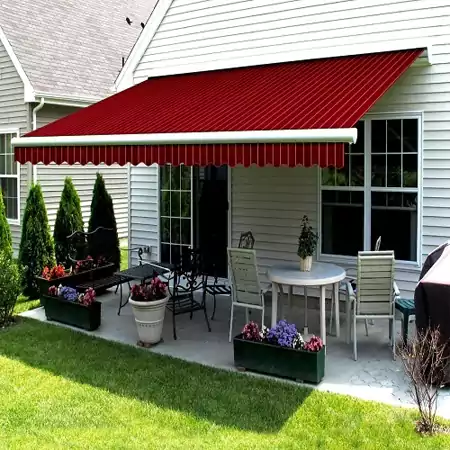
A house with an overhang immediately stands out in a neighbourhood. The shade structure not only provides a design focal point but also breaks the monotony of the typical roofline. If you choose a retractable version, a fixed structure, or one with ornate patterns, these add-ons can accentuate the architectural design of any residence.
Besides, an array of materials and colors allows homeowners to customize according to their personal aesthetic. This flexibility ensures that the awning blends seamlessly with the existing exterior, complementing rather than overshadowing it.
Moreover, with modern advancements, the designs have become more sophisticated, capable of fitting into both contemporary and traditional home styles. It is best when you have just shifted to a new location and are thinking of a separate place for outdoor seating. Safely bring your furniture to the place and get an awning to enjoy a fun time with your family.
Creating Comfortable Outdoor Spaces
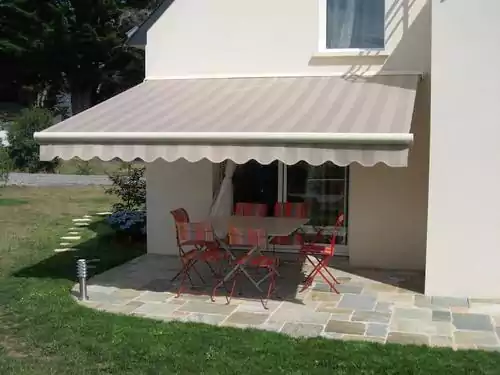
For those who cherish outdoor living or those looking to expand their living space without the complexities of a complete home renovation, an awning is a perfect solution. By providing shade, it creates a cooler, more comfortable space on patios, balconies, or terraces, making it pleasant even during peak sun hours.
This extended shaded area can be used for various purposes, such as an outdoor dining space, a reading nook, or even a play area for kids. Moreover, with the shield from direct sunlight, there is less risk of harmful UV exposure. It’s not just about physical comfort, but also the peace of mind knowing you have a safe outdoor environment.
Slashing Energy Bills with Natural Temperature Regulation

One of the most significant benefits, and often overlooked, is how an awning aids in energy efficiency. During hot summer days, direct sunlight can significantly heat up the walls and windows, causing indoor temperatures to rise.
This, in turn, results in increased reliance on air conditioning. An overhang shields these areas from direct sunlight, reducing heat intake and consequently lowering cooling costs. This natural temperature regulation not only reflects on energy bills but also contributes to a smaller carbon footprint.
Moreover, this lessened dependence on artificial cooling systems increases the lifespan of such systems, saving on potential repair or replacement costs.
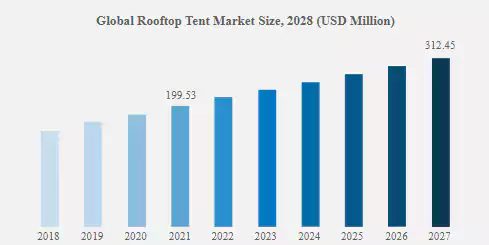
This above-pasted graph shows the market size of Global Rooftop Tent. The data shows the market size of past years, starting from 2018 and reaching up to the point of 199 Million USD in the year 2021.
The data also predicts the potential growth of the market for future years. By the year 2027, it is predicted that the size will rise up to the mark of 310 Million In USD.
Protection from Elements
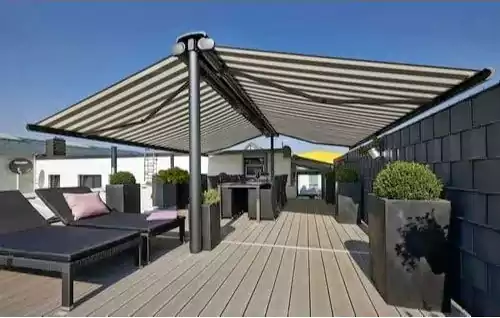
Besides the sun, a shade structure also offers protection from other elements like rain and snow. This means that homeowners can enjoy outdoor spaces even in light drizzles without worrying about getting wet or their outdoor furniture getting damaged.
The material used in many awnings is typically water-resistant, ensuring longevity and less maintenance. Moreover, this protection extends to windows and doors, preventing water seepage and potential damage to the house’s interior.
For areas prone to snowfall, a well-constructed awning can also act as a barrier, reducing snow accumulation near entrances or walkways.
Enhancing Property Value
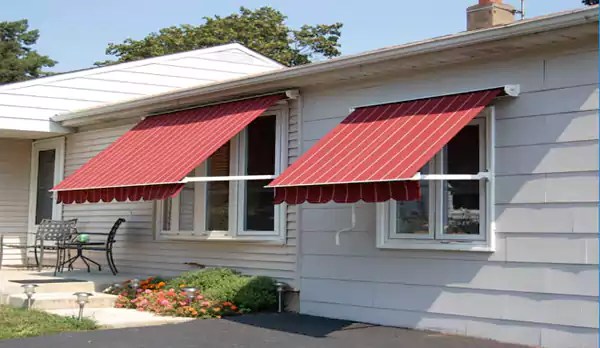
Finally, from an investment standpoint, any installation that offers both aesthetic and functional benefits can boost a property’s value. Potential buyers often look for homes that require minimal adjustments or renovations.
An existing overhang can be a selling point, emphasizing the advantages of energy savings and outdoor living spaces. Real estate professionals frequently highlight these features during property listings, showcasing the long-term benefits.
Moreover, an energy-efficient home can lead to potential tax benefits or rebates in some regions, making it even more attractive to potential buyers.
In Conclusion
The introduction of a roof awning to a residence is not just about aesthetics. It’s an amalgamation of design, functionality, and energy efficiency, making it a worthy installation for any homeowner.
As one continues to seek ways to make their homes more sustainable and appealing, it’s necessary to consider options that offer multifaceted benefits, and this architectural feature is a prime example.








